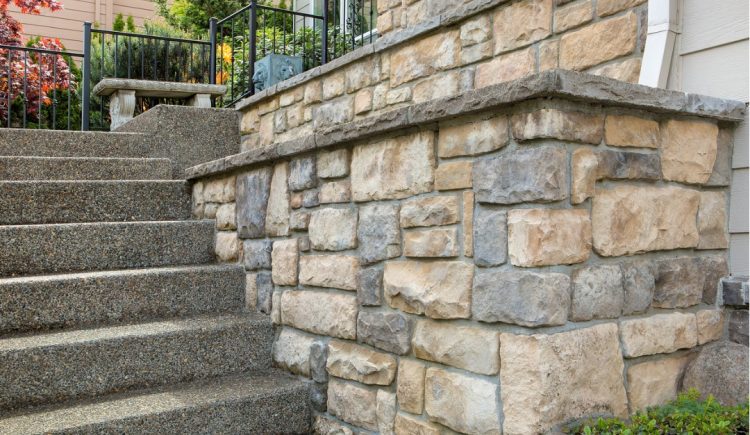Stone is an attractive material, but it’s expensive. It’s also not suitable for some applications due to its weight. Stone veneer is a more affordable alternative that can give you the aesthetic you desire, but there are downsides that you should consider before choosing stone veneer for your house.
Types of Stone Veneer
Natural stone siding is durable and beautiful. It’s also a long-lasting, sustainable material. If your home ever gets damaged or demolished, natural stone can be recycled.
In many localities, building codes place limits on the weight of stone siding. If your city or town has restrictions in place, you’ll have to choose stone siding that isn’t too thick. Real stone can also be costly, in terms of both product and labor costs.
Artificial stone veneer can be manufactured using cement and natural aggregates, clay or dense polyurethane. Materials are poured into molds made from natural stone to produce veneers that are made from synthetic materials but look like real stone. Some manufactured stone siding contains pigments, while other products are painted.
How to Use Stone Veneer to Improve Your Home
Stone veneer can be used both outdoors and indoors. Because artificial stone siding weighs less than natural stone, you can use manufactured veneers in places where natural stone would be too heavy. For instance, if you want to cover the entire exterior of your home with stone, artificial veneers may be a good option. You can also use stone veneer to cover your fireplace or to create an attractive backsplash or accent wall.
Benefits and Potential Problems
Homebuyers enjoy the look of stone, and they will pay more for houses that have stone veneer. If you have stone veneer installed inside or outside your house, you will likely get a high return on investment.
Stone veneer requires little maintenance. The material is more resistant to fire than siding is.
Often veneers are installed one artificial stone at a time, but they also come in panels that contain several stones. Stone veneer panels can make installation easy and inexpensive. Most contractors can handle the project, and you may even be able to do it yourself. If you choose panels, your house will most likely have sections of siding that are identical. That may or may not bother you.
Problems can arise if stone siding isn’t installed correctly. If there are cracks and moisture can get behind the stone, it can lead to leaks, rot, mold and other serious structural issues.
Consider Incorporating Stone Veneer in Your Home’s Design
Stone veneer can improve your home’s curb appeal or enhance your interior design. If you decide to use stone veneer, check local building codes and hire a qualified contractor.











